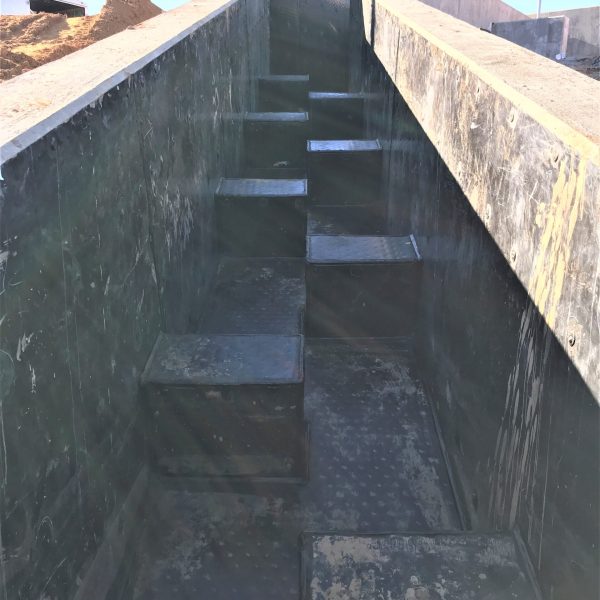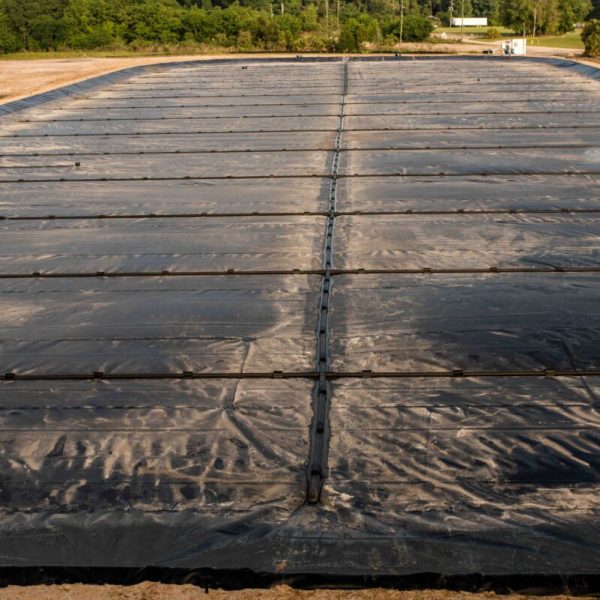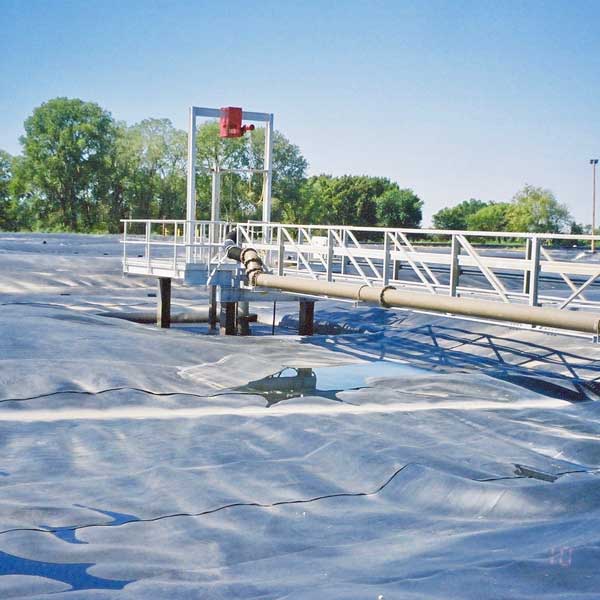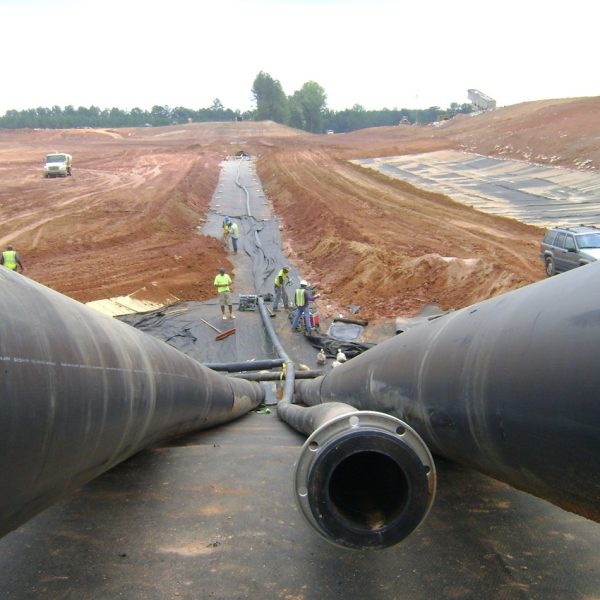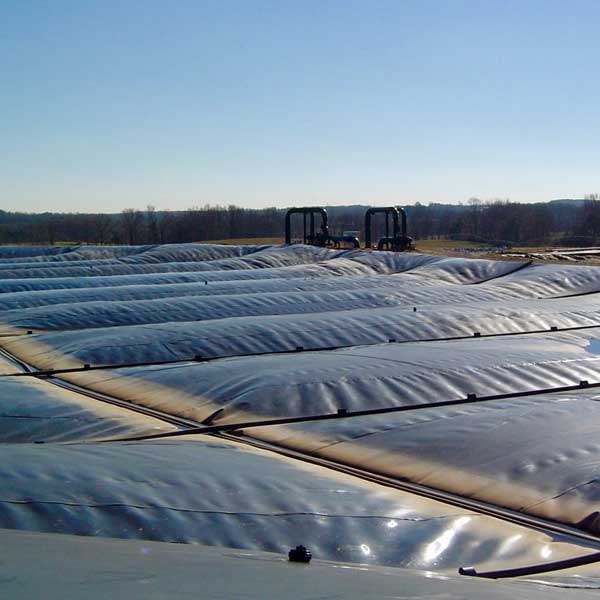Biogas Collection Systems
Plastic Fusion is the leading installer of biogas collection systems for capturing methane emissions produced during anaerobic digestion.


















Piping Systems
Our custom fabricated piping systems meet even the toughest handling requirements. Materials offer long-term chemical resistance and environmental containment.
Liner Systems
Plastic Fusion has been installing geosynthetic containment systems for more than 40 years.
Anaerobic Digester Covers
We design and install HDPE cover systems for anaerobic digesters and are a pioneer in anaerobic digester lagoons for biogas collection and conversion to Renewable Natural Gas (RNG).
Concrete Protective Liners
Plastic Fusion is a leader in the installation of concrete protective liners in industrial tanks and storage facilities, wastewater treatment tanks, and chemical processing plants.
Biogas Collection Systems
Biogas collection systems are crucial components in the sustainable management of organic waste, capturing methane emissions produced during anaerobic digestion processes. These systems typically consist of a network of pipes, wells, and collection points strategically designed to capture biogas and transport it to storage or utilization facilities. By efficiently capturing and harnessing biogas, these systems not only mitigate greenhouse gas emissions but also offer a renewable energy source for power generation, heating, or other applications, contributing to environmental sustainability and resource efficiency.

Read more
What are Biogas Collection Systems?
Biogas collection systems are integrated setups designed to capture, store, and utilize biogas produced from the anaerobic digestion of organic materials. These systems typically include anaerobic digesters, biogas collection covers, gas storage units, and pipelines to transport the biogas for energy production or storage.How Do Biogas Collection Systems Work?
Biogas collection systems capture the biogas released during the anaerobic digestion of organic waste. The system starts with an anaerobic digester where organic waste is broken down by microorganisms without oxygen. As the waste decomposes, biogas is produced and collected under a biogas collection cover. This gas is transported through pipelines to storage units or directly to generators for energy production.What Components are Included in Biogas Collection Systems?
A typical biogas collection system includes the following components:- Anaerobic Digesters: Containers where organic waste is decomposed anaerobically.
- Biogas Collection Covers: Seals that trap the biogas produced in the digester.
- Gas Pipelines: Pipes that transport the collected biogas to storage or utilization points.
- Gas Storage Units: Tanks where biogas is stored before use.
- Gas Utilization Equipment: Generators, boilers, or other devices that convert biogas into usable energy.
What are the Benefits of Using Biogas Collection Systems?
- Renewable Energy Production: Biogas can be used to generate electricity and heat or be upgraded to natural gas quality.
- Waste Management: Efficiently handles organic waste, reducing landfill use and associated emissions.
- Environmental Protection: Captures methane, a potent greenhouse gas, reducing its release into the atmosphere.
- Economic Savings: Producing renewable energy on-site reduces energy costs, and revenue can be generated through the sale of excess energy.
How to Implement a Biogas Collection System?
Implementing a biogas collection system involves several key steps:- Site Assessment: Evaluate the site for suitability, including the availability of feedstock and space.
- System Design: Design the system to meet the site’s specific needs, considering factors like digester size and biogas usage.
- Installation: Install the components, including the digester, collection covers, pipelines, and storage units.
- Commissioning: Test the system to ensure it operates correctly and efficiently.
- Operation and Maintenance: Regularly monitor and maintain the system to ensure ongoing efficient operation.
What Maintenance is Required for Biogas Collection Systems?
Maintenance of biogas collection systems involves regular checks and servicing of all components:- Digesters: Monitor for leaks, structural integrity, and microbial health.
- Collection Covers: Inspect for tears or wear and ensure a proper seal.
- Pipelines: Check for blockages or leaks and ensure proper gas flow.
- Storage Units: Ensure tanks are sealed and operating at correct pressures.
- Utilization Equipment: Regularly service generators and other gas utilization devices to ensure efficient operation.
Why Choose Plastic Fusion for Biogas Collection Systems?
Plastic Fusion is a leader in designing and installing biogas collection systems. With expertise in integrating advanced technology and high-quality materials, Plastic Fusion ensures optimal performance and efficiency of biogas systems. They offer comprehensive services, from initial design and installation to ongoing maintenance, helping clients maximize biogas production and contribute to sustainable energy solutions. Choose Plastic Fusion for reliable and efficient biogas collection systems that meet your energy and environmental goals.How Does a Methane Collector Work?
A methane collector is a device used to capture methane gas produced from decomposing organic materials in anaerobic environments. This collected methane can be used as a renewable energy source, reducing greenhouse gas emissions and contributing to sustainable energy solutions.What Is the Role of Biogas Piping in Energy Systems?
Biogas piping is essential for transporting biogas from its production site to storage tanks or utilization equipment. It ensures a safe and efficient transfer of gas, minimizes leaks, and maximizes the energy potential of the biogas collected.Why Are Biogas Collection Covers Important?
Biogas collection covers play a vital role in capturing the biogas generated during the anaerobic digestion. These covers help trap the gas, reduce odors, and prevent the release of harmful emissions into the atmosphere, enhancing the system’s overall efficiency.What Is Biogas Equipment Fabrication?
Biogas equipment fabrication involves custom designing and manufacturing components required for biogas production and collection. These include tanks, piping systems, and gas treatment units tailored to meet the specific needs of biogas facilities.How Do Digester Gas Treatment Systems Work?
Digester gas treatment systems purify the biogas produced in digesters by removing impurities like carbon dioxide, hydrogen sulfide, and moisture. This treatment improves the quality of the biogas, making it suitable for use as a high-BTU (British Thermal Unit) fuel source.What Is the Importance of Methane Collection Systems?
Methane collection systems are crucial for capturing methane gas from organic waste decomposition. These systems help reduce greenhouse gas emissions, convert waste into energy, and promote environmentally friendly practices in industries and waste management.What Are the Benefits of Using Biogas Tanks?
Biogas tanks store the gas produced during anaerobic digestion, maintaining it under controlled conditions for later use. These tanks are essential for ensuring a continuous supply of biogas for energy production, even when gas production rates fluctuate.What Is the Purpose of Biogas Collection Covers?
Biogas collection covers are designed to trap the biogas produced in digesters or lagoons. They prevent the gas from escaping into the environment, enable efficient gas collection, and help maintain a stable anaerobic environment for ongoing digestion.How Do Advanced Biogas Systems Enhance Gas Production?
Advanced biogas systems incorporate modern technologies and equipment to optimize the production and collection of biogas. They improve the efficiency of the digestion process, increase gas yields, and support the sustainable conversion of organic waste into renewable energy.What Is a Biogas Septic System?
A biogas septic system combines waste treatment with biogas production. It uses anaerobic digestion to break down waste, producing biogas as a by-product, which can be collected and used as a renewable source of energy for various applications.What is Biogas Upgrading Technology?
Biogas upgrading technologies are systems designed to purify and enhance the quality of raw biogas by removing impurities such as carbon dioxide (CO2), hydrogen sulfide (H2S), moisture, and other contaminants. The goal is to produce high-purity methane, commonly referred to as biomethane or renewable natural gas (RNG), which can be injected into the natural gas grid or used as vehicle fuel.Types of Biogas Upgrading Technologies
- Pressure Swing Adsorption (PSA): This process separates CO2 and other gases from methane using a bed of adsorbent materials under pressure. PSA is commonly used to produce high-purity methane.
- Water Scrubbing: CO2 and H2S are absorbed in water under high pressure, leaving behind methane. Water scrubbing is a cost-effective method for upgrading biogas.
- Chemical Absorption: Involves using chemical solvents to remove CO2 from biogas. This method is highly efficient for producing pure methane.
- Membrane Separation: Uses selective membranes that allow methane to pass through while retaining CO2 and other contaminants. Membrane separation is a scalable and modular biogas upgrading option.
- Cryogenic Separation: This technology cools biogas to very low temperatures, condensing the CO2 and other gases, leaving behind methane. It is ideal for producing high-quality biomethane but requires significant energy input.
What are Biogas CHP Systems?
Biogas Combined Heat and Power (CHP) systems utilize biogas to generate electricity and heat. These systems are highly efficient, as they maximize energy output from the same fuel source.How Biogas CHP Systems Work
- Electricity Generation: Biogas is burned in an engine or turbine, generating electricity that can be used on-site or sold to the grid.
- Heat Recovery: The waste heat produced from electricity generation is captured and used for heating purposes, such as space heating, water heating, or industrial processes.
Benefits of Biogas CHP Systems
- Increased Energy Efficiency: CHP systems capture waste heat, which boosts overall energy efficiency to as much as 80-90%.
- Cost Savings: Biogas CHP systems reduce energy costs by generating both electricity and heat from a single fuel source.
- Renewable Energy: CHP systems powered by biogas offer a renewable, carbon-neutral solution for energy production.
What is Biogas Design?
Biogas design refers to engineering and planning biogas production systems, ensuring optimal waste digestion and energy production performance. Designing a biogas system involves:- Sizing the Digester: Determining the appropriate digester size based on the volume of waste and desired biogas output.
- Selecting Digester Type: Choose between batch or continuous flow digesters based on the scale and purpose of the biogas system.
- Gas Collection: Designing an efficient gas collection and storage system, such as floating covers or fixed domes.
- Heat and Power Integration: Incorporating biogas CHP systems or upgrading biogas for energy applications.


